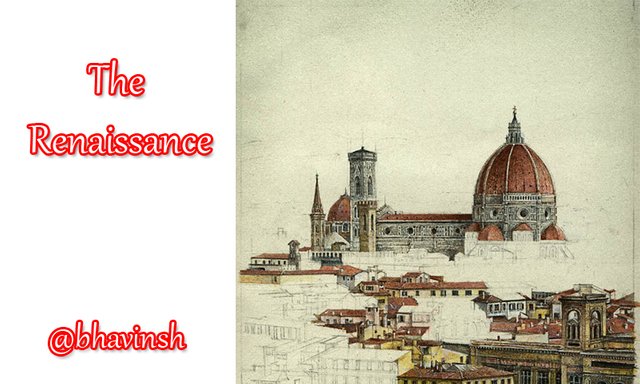The Renaissance

image created by canva.com
One of the cultural and artistic manifestations that have had more renown in our history was The Renaissance, starting in Italy and after the fifteenth century, began its expansion throughout the territory of Western Europe.
This cultural movement initiated the change of mentality in Europeans since, starting from the Renaissance, the concept of a theocentric world emerged and with authenticity of the medieval period to finally have an anthropocentric criterion. With the arrival of this change, humanistic philosophical theory began to be regarded as the beginning of the Modern Age.
It should be noted that anthropocentric thought was emphatic within the human faculty because through it, we began to access knowledge from the side of reasoning. Because of this, all the people who lived during the Renaissance period were and still are considered the heirs of values imparted by Roman and Greek culture. Now, the Renaissance was divided into two phases:
First Renaissance: It began in 1400 and ended in 1480. Its epicenter was in the city of Florence.
High Renaissance: It began in 1480 and ended in 1520. The center was in Rome and expanded throughout the European continent.

Image Taken from the Original Author
In another order it is necessary to mention that, The Renaissance developed as a very critical spirit and its main intention was to know through science the real meaning of all things and thanks to this, the various arts that we know today were manifested and the most peculiar of all is that, The Renaissance was the forerunner of understanding the relationship that human beings can have with each other.
Similarly, with this cultural movement the individual began to have more relevance as far as his concept is concerned. That is, starting from this manifestation man transcended as an artistic creator and at the same time, developed works and materials that marked a before and after in human culture.
It should be noted that Renaissance art was idealistic and naturalistic because, all artists had the same purpose of representing the world from a real side. That is, they captured in their works the reality of what they were observing, noting that, for them, there was only beauty; this means that, what they did not consider beautiful, practically did not exist and they considered that the things that did not inspire, it was unnecessary to emerge it.

Image Taken from the Original Author
During the Renaissance, the walls or paintings always had a three-dimensional and flat surface, this was not coincidence or aesthetic issues since, this was the hypothetical way to express how artists had the perspective of the real world and starting from these techniques, they managed to develop chiaroscuro spaces and the body began to have more volume.
It should be noted that the artists who were part of the Renaissance movement managed to develop intellectually in geometric, mathematical and optical disciplines; novelty that allowed them to solve the problems of anatomy and the representation of these disciplines was carried out through the human body.
A curious aspect at this point is that, thanks to the solution of anatomy problems through the human body, they managed to unify them to other disciplines, these being philosophy, literature and theology. This particularity allowed all the branches mentioned above to increase the interest they had.

Image Taken from the Original Author
Another peculiarity that the Renaissance had was to expand its catalog of works, that is, they no longer concentrated only on religious material because, they began to create representations around the human being highlighting feelings, desires and delights. Each painting had a nude representation, landscapes and mythological.
Finally, during the Renaissance it was possible to create a new artistic and cultural stage, a situation that gave way to the construction of universities, palaces and town halls, thus allowing the construction of churches to be not the only architectural development. In the same way, it is necessary to mention that, all these changes were not very fast but, if they bridaron the innovation and progress that was being needed in the social and scientific context.
We support quality posts anywhere and any tags.
Curated by : @nadeesew
Thanks @nadeesew